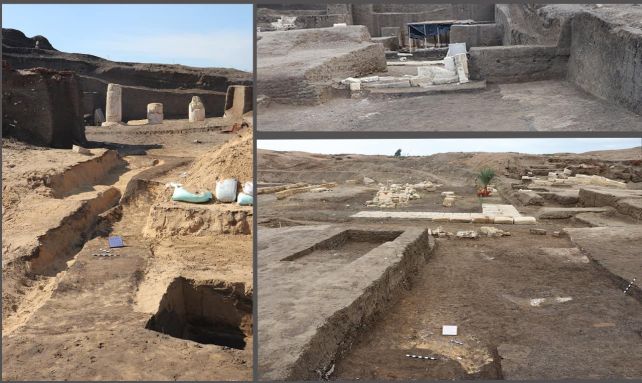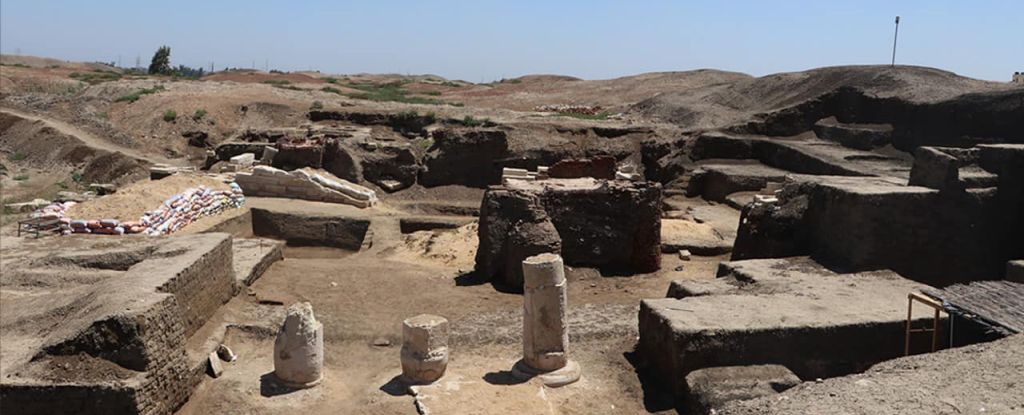A ruined building in Kafr El Sheikh was where ancient Egyptians once stood, gazing at the stars above.
More than 2,500 years ago, the building constituted the largest astronomical observatory known in Egypt in the 6th century BCE, part of what we now call the Temple of the Pharaohs in the town of Buto.
There, early astronomers assiduously tracked the movements of the Sun and the stars, a vital service in the lives of the ancient Egyptians.
The Egyptians were among the most adept astronomers in ancient history, and their legacy echoes to this day. It was in ancient Egypt that the 365-day calendar was born, and the 24-hour day. They completely mapped the night sky, and had their own constellations and zodiac, some signs of which are still recognized today.
The newly discovered observatory demonstrates those skills, even with just the scant evidence that has withstood the ravages of time.
The building itself, built of mud bricks, covered an area of 850 square meters (9,150 square feet), built in an L-shape supported by pillars, with the entrance facing east, the direction of the sunrise.
Within, archaeologists from the Egyptian Ministry of Tourism and Antiquities found artifacts and paraphernalia associated with the study of the skies.
Of particular note was a large sloping shadow clock, of a design devised by the ancient Egyptians to keep track of the time. These clocks were a type of sundial, using the movement of a shadow as the Sun moves across the sky to track the time of day from dawn till dusk.
This particular clock consisted of a 4.8-meter (15.7-foot) course of limestone slabs, on which were mounted five flat limestone blocks, three vertical and two horizontal. Although age-worn now, on these blocks, lines would have once been inscribed to track the changing inclination of a shadow cast upon the blocks as the Sun moved.

A large stone block was also found in a circular room, with two circular stone blocks, one at the north and one at the west. This was also used for tracking the inclination of the Sun.
A series of five smaller rooms were likely used to store the observatory’s tools, while four small mud-brick rooms and one stone room seem to have been used as the observatory’s tower. A large hall was also uncovered, with three walls coated in yellow mortar on which murals had been painted.
These included a ritual boat with eight niches, and two oars at the back. At the front of the boat, the archaeologists made out a drawing of the head of Horus and the Udjat Eye, symbols linked not just to the Universe and the cosmos, but the god Horus and the goddess Wadjet, the most important deities in Buto.
In the middle of this hall stands a stone platform, on which were found inscriptions mostly of astronomical scenes of sunrise and sunset during the three seasons observed in ancient Egypt.

Artifacts in the observatory included bronze statues of Osiris and Nemes, a terracotta statue of the god Bes, and a granite statue dating back to the 26th Dynasty, under the rule of pharaoh Wahibre Psamtik I. This statue depicts Osiris, and is inscribed to the priest Psamtik-Seneb, containing the title of Royal Seal Bearer.
Other artifacts include measuring tools, a faience menat necklace, a faience statue of the god Ptah, faience religious symbols, pottery artifacts, amphora covers made of mortar, and offering tables.
Astronomy was deeply important to the ancient Egyptians. They used their complex calendar to mark the passage of time, and determine the dates of religious and political rituals, such as festivals and coronations. It was also important for tracking the annual flooding of the Nile, agriculture, and navigation.
Today, we take our calendar for granted – it’s just part of our way of life, around the world.
Yet we have, at least partly, the hard work and ingenuity of the ancient Egyptian astronomers to thank for it – and their solid engineering, that such temples as this still stand so we can study their work, thousands of years after their own lives disappeared into the sand.





